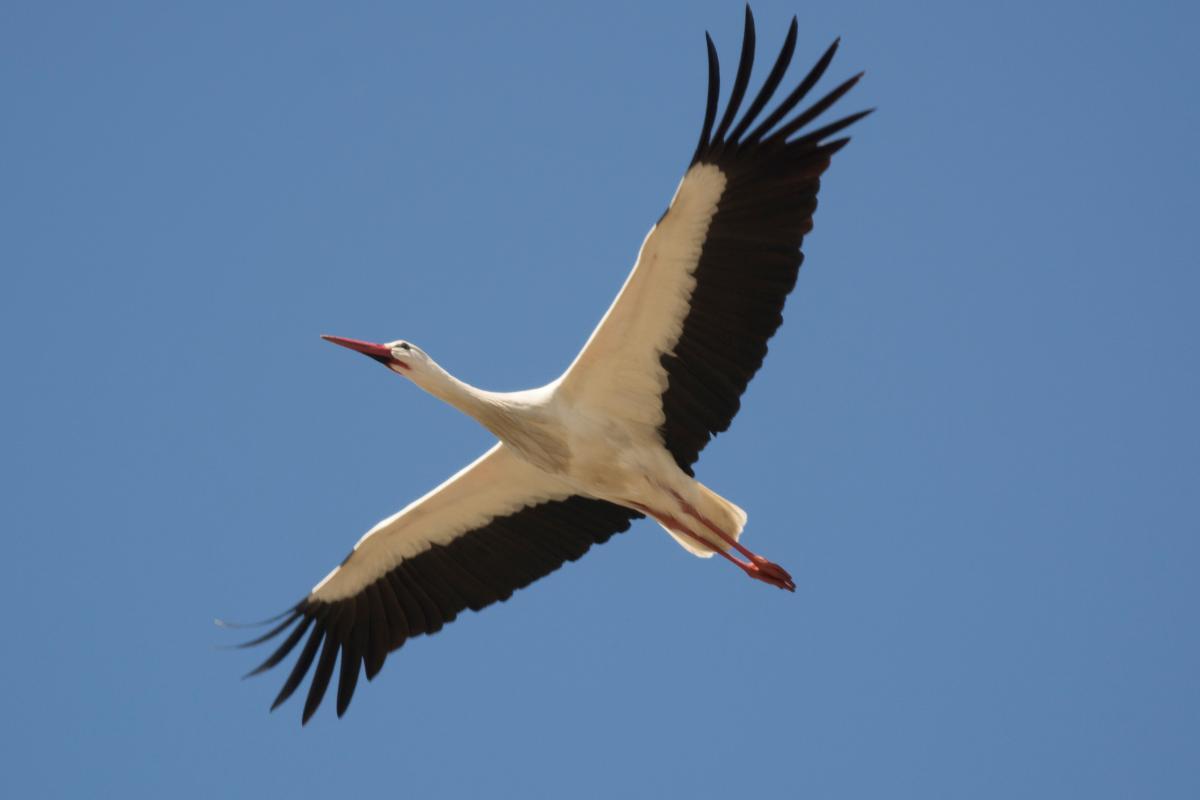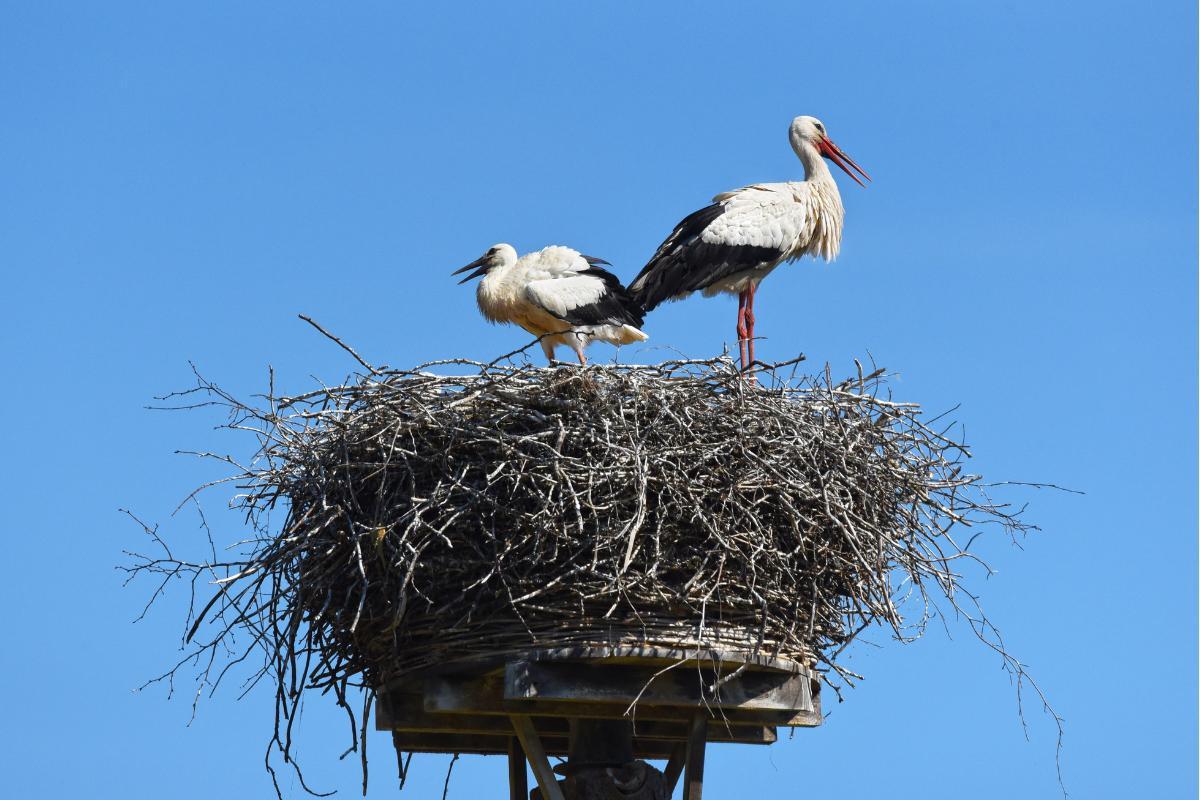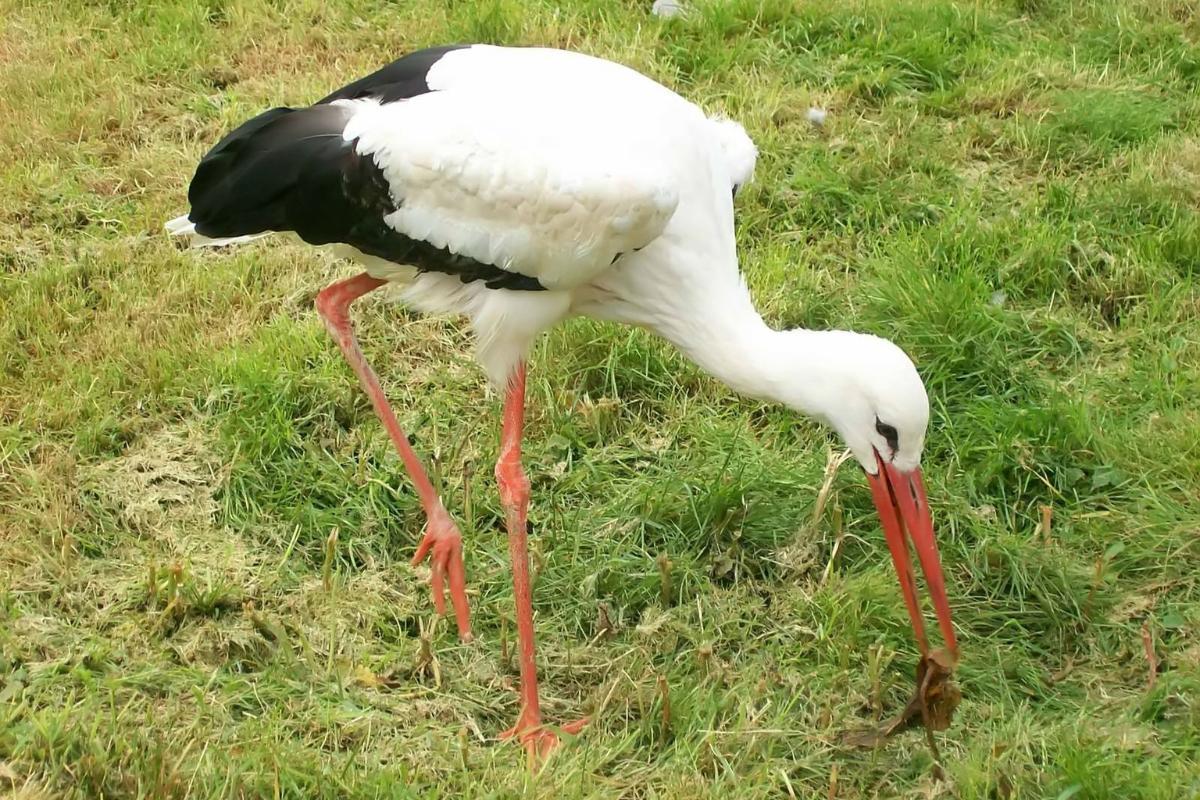Surprising Facts About Storks


Storks are more than just the birds of folklore known for delivering babies—they are fascinating creatures with a rich history in both nature and culture. Known for their long legs and graceful flight, storks exhibit remarkable behaviors and traits that make them unique in the animal kingdom.
In this AnimalWised article, we’ll dive into 10 surprising facts about storks, shedding light on their habits, adaptations, and the roles they play in ecosystems around the world.
- They undertake one of the longest migrations of any animal
- They symbolize fertility
- They build some of the largest and most durable nests among birds
- They exhibit temporary monogamy
- They have a unique way of communicating
- They are expert gliders
- They have a varied diet
- Storks have been a recurring theme in folklore and mythology
- They have exceptional navigational skills
- There are not only white storks, but also black storks
They undertake one of the longest migrations of any animal
The white stork (Ciconia ciconia) embarks on one of the most remarkable migrations in the animal kingdom, traveling up to 12,000 kilometers (7,500 miles) between Europe and Africa each year.
These birds leave their breeding grounds in Europe and journey over countries like Spain and Morocco, crossing the formidable Sahara Desert to reach their wintering sites in sub-Saharan Africa. Depending on environmental conditions, this epic journey can take anywhere from 25 to 50 days.
White storks follow two primary migration routes: the western route, which passes through Spain and the Strait of Gibraltar, and the eastern route, which traverses the Balkans and the Bosphorus before heading toward East Africa.
They rely on thermal currents to conserve energy, gliding at high altitudes without constant wing flapping. By flying in large flocks, storks can take advantage of rising air currents, or thermals, to soar and cover vast distances.

They symbolize fertility
The myth that storks deliver babies originates from old European traditions, particularly German folklore.
According to legend, storks would retrieve babies from lakes or swamps—places believed to be connected to the souls of unborn children—and deliver them to families. This story also served as a cultural response to the taboo surrounding discussions of human reproduction. In times when it was uncommon to talk openly about where babies come from, parents would use simpler, more socially acceptable tales, like that of the stork, to explain the arrival of a new family member. Although it is no longer taken literally, the myth remains a widely recognized symbol, especially in advertisements and greeting cards celebrating the birth of a new baby.
They build some of the largest and most durable nests among birds
Storks are known for constructing some of the largest and most durable nests in the bird world. These impressive structures can exceed two meters (over six feet) in diameter and weigh several hundred kilograms (hundreds of pounds).
They are primarily built from twigs, leaves, and other natural materials. Nest building is a collaborative effort between the stork pair, and once completed, the nests can be reused year after year. With new layers added each breeding season, the nests continue to grow in size and weight over time.
Storks prefer to build their nests in elevated locations such as chimneys, church towers, utility poles, and tall trees. These nests can endure for several decades, with some pairs using the same nest for generations, making minor repairs and additions annually.
The nest also plays a crucial role in courtship and reproduction. During the mating season, the male often “decorates” the nest with various objects, such as pieces of fabric or plastic, to attract a mate. Once the pair is established, the nest serves as a stronghold, protecting the eggs and chicks from predators.

They exhibit temporary monogamy
White storks are known for their monogamous behavior, but this monogamy is temporary, lasting only for a single breeding season. During this time, the pair works closely together to build the nest, incubate the eggs, and raise the chicks. However, at the end of the breeding season, they typically separate and may choose new partners the following year.
This pattern of seasonal monogamy is common among migratory species. While storks usually return to the same breeding site after migration, they do not necessarily reunite with the same partner. If both members of a previous pair return to the same nest at the same time, they may resume their bond. However, if one partner does not return or arrives late, the other will readily seek a new mate.
They have a unique way of communicating
Another fascinating aspect of storks is their unique form of communication. White storks use a distinctive behavior called “bill-clattering,” which involves rapidly clicking the upper and lower parts of their beaks together to produce a loud, rhythmic sound. This vocalization plays a vital role during the breeding season and serves several important functions:
During courtship, bill-clattering allows males to attract females and showcase their vitality. It also helps reinforce the bond between the pair and serves as a way to defend their territory. Intense clattering can deter intruders and maintain order within the breeding area.
In colonies, bill-clattering functions as a means of group communication, enabling storks to coordinate their activities and stay connected within large communal nesting sites. This communication system is crucial for successful reproduction and maintaining group cohesion.
They are expert gliders
Some species of storks are renowned for their remarkable ability to glide over long distances. During migration, this skill is crucial for surviving such arduous journeys, as it minimizes energy expenditure and optimizes the use of thermal currents.
Storks utilize thermal updrafts, or "thermal currents," to soar without the need for continuous flapping. These currents, created by the uneven heating of the Earth's surface, allow storks to remain airborne for extended periods. By spiraling within these updrafts, storks can gain altitude and cover vast distances while conserving energy. This technique enables them to complete long migrations with minimal physical effort.
In addition to their impressive gliding ability, storks also exhibit exceptional navigational skills. They rely on landscape features and the position of the sun to orient themselves during migration, ensuring they stay on course over thousands of kilometers.
If you enjoyed learning about storks, you’ll love discovering how other birds navigate their seasonal travels.

They have a varied diet
Another interesting aspect of storks is their diverse diet, which enables them to thrive in various habitats and conditions.
Storks are opportunistic feeders, consuming a wide range of prey that includes insects, worms, small amphibians, reptiles, and fish. This dietary flexibility allows them to make the most of the food resources available in different ecosystems.
In rural and agricultural areas, storks often forage for insects and larvae in plowed fields and grasslands. During the breeding season, their diet may shift to include more fish and amphibians, which provide the high protein content necessary for the growth and development of their chicks. Storks are also known to eat small rodents and reptiles, showcasing their ability to adapt to changes in food availability.
Did you know that beak shape plays a vital role in a bird's feeding habits? Explore the intriguing world of long-beaked birds for more insights.

Storks have been a recurring theme in folklore and mythology
Storks have played significant roles in various cultures and mythologies throughout history, symbolizing a range of concepts and beliefs. Their nesting habits near human dwellings and their association with spring and rebirth have made them powerful symbols of fertility and good fortune in many traditions. Here are a few examples:
- European Mythology: as mentioned earlier, storks are famously associated with the myth of delivering babies, particularly in Germany and the Netherlands. This belief likely originated from the storks’ tendency to nest on rooftops and chimneys, which made them seem connected to family life and the arrival of new members.
- Chinese Culture: in China, the stork is considered a symbol of longevity and good fortune. In traditional Chinese art, storks are often depicted alongside other symbols of happiness and a long life, such as pine trees and cranes. These birds are believed to bring prosperity and are featured in paintings, sculptures, and other forms of art as a representation of a prosperous and enduring life.
- African cultures: in some African cultures, the stork symbolizes wisdom and protection. Local myths and legends often portray storks as guardians of people and communities, believed to offer protection and guidance. They are sometimes associated with bringing rain and ensuring a good harvest, further emphasizing their protective role.
Did you know that storks have evolved to sleep while remaining upright? Learn more about these sleeping adaptations in this other article.
They have exceptional navigational skills
One of the most fascinating aspects of their migration is their ability to use the Earth's magnetic field as a guide. This allows them to navigate across vast distances, even under challenging weather conditions or in unfamiliar landscapes.
This magnetic sense functions like an internal compass, helping them determine their position and direction along their migration route. It is a crucial tool that ensures they stay on course, minimizing detours and increasing the likelihood of a successful migration from their breeding grounds in Europe to their wintering areas in Africa.
In addition to their magnetic orientation, storks use other navigation methods to enhance their accuracy during migration. They rely on visual cues from the landscape, such as rivers and mountain ranges, as well as weather patterns, like wind direction and cloud cover. Storks also use their prior knowledge of migration routes, passed down through generations, to complement the information provided by the magnetic field. These navigational strategies ensure that they can undertake these incredible journeys year after year with remarkable precision.

There are not only white storks, but also black storks
While the white stork is the most well-known species, the black stork (Ciconia nigra) remains lesser-known, primarily due to its preference for forest habitats and humid areas, which contrasts with the open environments favored by other stork species.
The black stork is distributed across forests in Europe, Asia, and Africa, typically inhabiting more densely wooded and less accessible regions in Europe. This preference for remote, undisturbed habitats contributes to its lower visibility and recognition compared to its white counterpart.
The black stork is also characterized by its solitary and secretive behavior. Unlike the white stork, which commonly nests in large colonies, the black stork tends to build its nests in elevated locations, such as tall trees or cliffs, making them difficult for both predators and humans to access.

If you want to read similar articles to Surprising Facts About Storks, we recommend you visit our Facts about the animal kingdom category.
- Bécares, J., Blas, J., López-López, P., Schulz, H., Torres, F., Höfle, U., ... & Schweiz, S. (2019). Migration and spatial ecology of the white stork in Spain.
- González Novoa, JA (1993). Contribution to the study of the ecology of storks (Fam. Ciconiidae) in the plains of Venezuela (Doctoral dissertation, Complutense University of Madrid).
- Moreno Opo, R., Arredondo, A., Soria, C., Guil Celada, F., Higuero, R., & Guzman, J. (2008). The black stork, Ciconia nigra, in postnuptial and migratory concentrations in Iberia: phenology, activity and age structure. Ecology, (22), 127-134.











